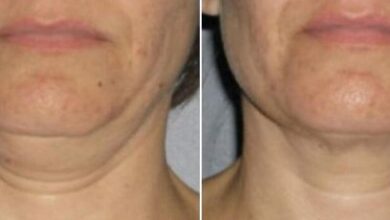Dental Instruments names and pictures: Tools of the Trade

In the bustling world of dentistry, where precision and care are paramount, dental instruments play a pivotal role in ensuring optimal oral health. From diagnostic tools to preventive, restorative, and orthodontic instruments, the array can be overwhelming. Let’s embark on a journey through the intricacies of dental instruments names and pictures, unraveling functions, and the technology shaping the future of dentistry.
I. Introduction
A. Importance of Dental Instruments
Dental instruments are the unsung heroes of any dental practice. They are the extension of a dentist’s expertise, aiding in diagnosis, treatment, and oral health maintenance.
B. Role in Dental Practices
In the dynamic field of dentistry, these instruments are not just tools but essential companions, enhancing the precision and efficiency of dental procedures.
II. Basic Dental Instruments
A. Mirror and Explorer
At the core of dental examinations, mirrors and explorers facilitate visibility in hard-to-reach areas, ensuring no dental issue goes unnoticed.
B. Tweezers and Scalers
Tweezers and scalers come into play during cleanings, helping dentists remove tartar and plaque with meticulous accuracy.
C. Dental Probes
Used to measure pocket depths and identify potential gum diseases, dental probes are indispensable diagnostic tools.
III. Diagnostic Instruments
A. X-ray Machines
X-ray machines provide an in-depth look at the internal structure of teeth, aiding in the detection of cavities, infections, and other dental anomalies.
B. Intraoral Cameras
In the era of digital dentistry, intraoral cameras capture high-resolution images, offering a detailed view for accurate diagnoses.
C. Digital Impression Systems
Say goodbye to messy molds – digital impression systems create precise, virtual models for various dental applications.
IV. Preventive Instruments
A. Dental Sealants
Sealants act as shields, protecting teeth from decay by sealing off vulnerable areas and preventing bacterial infiltration.
B. Fluoride Treatments
Proven to strengthen enamel, fluoride treatments are preventive measures that combat tooth decay and promote overall oral health.
C. Teeth Cleaning Tools
From prophylaxis angles to dental floss, these tools ensure thorough cleaning, preventing the onset of dental issues.
V. Restorative Instruments
A. Dental Drills
The whirring sound of dental drills is synonymous with restorative procedures, as they efficiently remove decay and prepare teeth for fillings.
B. Dental Fillings
Various materials, from amalgam to composite, are used in dental fillings to restore the structure and function of damaged teeth.
C. Crown and Bridge Instruments
Crafting and placing crowns and bridges demand precision instruments, ensuring a seamless fit and long-lasting results.
VI. Orthodontic Instruments
A. Braces and Aligners
Orthodontic instruments include the classic braces and modern aligners, working in tandem to correct dental misalignments.
B. Orthodontic Pliers
Essential for adjusting braces and wires, orthodontic pliers allow for meticulous customization, contributing to treatment success.
C. Archwire and Ligature
The invisible heroes of orthodontics, archwires and ligatures apply gentle pressure, guiding teeth into their desired positions.
VII. Endodontic Instruments
A. Root Canal Files
Endodontic procedures rely on precision, and root canal files ensure thorough cleaning and shaping of the root canals.
B. Apex Locators
Determining the apex of a root canal is made precise with apex locators, enhancing the success rates of endodontic treatments.
C. Gutta-Percha Points
Sealing the deal in root canal treatments, gutta-percha points create a resilient, infection-resistant barrier.
VIII. Periodontal Instruments
A. Scaling Instruments
Periodontal health is safeguarded by scaling instruments, which gumline.
B. Periodontal Probes
Measuring pocket depths accurately, periodontal probes aid in diagnosing and monitoring gum diseases.
C. Curettes
Curettes, with their curved tips, are essential for thorough root planing and removal of diseased tissue in periodontal procedures.
IX. Sterilization and Cleaning
A. Autoclaves
Infection control is paramount, and autoclaves ensure the sterilization of instruments, safeguarding both patients and dental professionals.
B. Ultrasonic Cleaners
Efficiently removing debris and contaminants, ultrasonic cleaners contribute to the cleanliness of dental instruments.
C. Sterilization Pouches
Individually wrapping instruments in sterilization pouches maintains their sterility until ready for use, aligning with stringent hygiene standards.
X. Emerging Technologies in Dentistry
A. 3D Printing in Dentistry
Revolutionizing dental prosthetics, 3D printing allows for the creation of precise and customized dental implants and crowns.
B. Laser Dentistry
From soft tissue treatments to cavity preparation, lasers in dentistry offer minimally invasive and precise solutions.
C. Artificial Intelligence Applications
AI applications assist in diagnostics, treatment planning, and even personalized patient care, marking a new era in dentistry.
XI. Choosing the Right Instruments
A. Considerations for Dentists
Dentists navigate a plethora of options, considering factors like instrument quality, ergonomic design, and compatibility with their practice.
B. Quality and Durability
Investing in high-quality instruments ensures longevity, reducing the need for frequent replacements and maintenance costs.
XII. Maintaining Dental Instruments
A. Proper Cleaning Procedures
Adhering to recommended cleaning protocols is vital for the longevity and effectiveness of dental instruments.
B. Regular Maintenance Checks
Scheduled maintenance checks prevent unexpected malfunctions, ensuring instruments are always in optimal working condition.
C. Replacement Protocols
Establishing clear guidelines for instrument replacement avoids compromising patient care due to worn-out or damaged tools.
XIII. Cost Considerations
A. Balancing Quality and Budget
Dental practices must strike a balance between investing in top-tier instruments and managing budget constraints.
B. Long-Term Investment
Viewing dental instruments as long-term investments encourages practices to focus on quality, ultimately benefiting patient care and practice reputation.
XIV. Future Trends in Dental Instruments
A. Advancements in Materials
Continual advancements in materials lead to the development of lighter, more durable, and biocompatible dental instruments.
B. Integration of Technology
The future holds seamless technology integration into instruments, enhancing precision, automation, and overall efficiency. Read more…
C. Patient-Centric Designs
Instruments of the future will prioritize clinical effectiveness and focus on patient comfort and experience.
XV. Conclusion
A. Recap of Key Points
Dental instruments are the backbone of dentistry, evolving with technology to meet the demands of modern dental practices.
B. Emphasizing the Evolution of Dental Instruments
As we witness the evolution of dental instruments names and pictures, it’s clear that these tools are not just instruments; they are the bridge between dental professionals and exemplary patient care.
FAQs
Are dental instruments standardized across practices?
- Dental instruments may vary slightly between practices, but there are industry standards to ensure quality and efficacy.
How often should dental instruments be replaced?
- The replacement frequency depends on usage, but regular maintenance and adherence to guidelines can extend their lifespan.
Do all dental practices use digital impression systems?
- While not universal, the adoption of digital impression systems is increasing as technology becomes more integral to dentistry.
What role does artificial intelligence play in dentistry?
- AI assists in diagnostics, treatment planning, and personalized patient care, enhancing the precision and efficiency of dental practices.
Can I sterilize dental instruments at home?
- Sterilizing dental instruments at home is not recommended; professional-grade autoclaves ensure proper sterilization and infection control.




